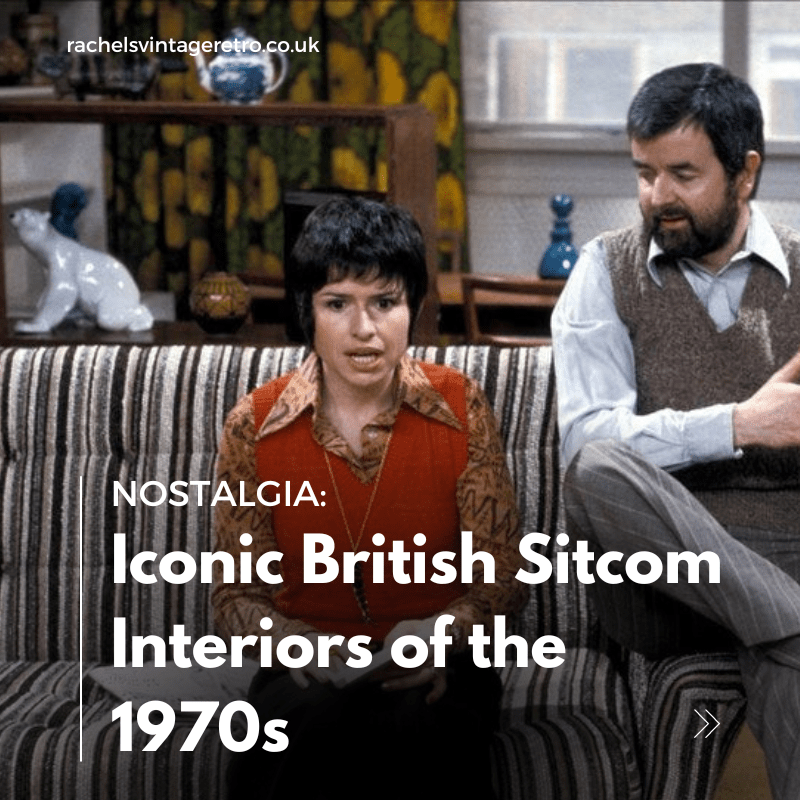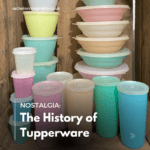The 1970s was arguably one of the best eras of the British sitcom. Writers such as Galton and Simpson, Dick Clement and Ian La Frenais etc, created memorable characters and comic situations that certain generations remember fondly to this day. The sets are just as iconic too, especially the interiors, giving us a glimpse of the typical 1970s home.
However, sometimes this wasn’t as modern and day-glo as we might think. Instead there are clues in the sets as to what they say about class attitudes of the time, as personified in the various characters who ‘lived’ in them. I have looked at three Iconic British Sitcom Interiors of the 1970s – Man About the House, Whatever Happened to the Likely Lads and The Good Life to see how this worked.
Man About The House
This sitcom had quite a daring concept for it’s day. It was about a young man, Robin Tripp (Richard O’Sullivan), sharing a flat with two single women Chrissy (Paula Wilcox) and Jo (Sally Thomsett), and the comic situations they got into as a result. The girls like the idea of Robin living there as he is a cookery student, and they are hopeless at cooking themselves. It is set in a terraced Victorian street in London and an older middle age couple, George (Brian Murphy) and Mildred (Yootha Joyce) Roper, live in the flat below. At first the girls have to tell George that Robin is gay for him to accept him moving in. However Mildred, played brilliantly by Yootha Joyce, soon discovers he is heterosexual and continually flirts with him as she is frustrated with her husband’s lack of advances. Man About The House ran from 1973 – 1976 on ITV and was written by Brian Cooke and Johnnie Mortimer.
The upper flat the younger three live in is decorated quite traditionally, probably because it is a rental and they didn’t need to furnish it themselves. There is a bookcase in the living room with books and cute ornaments displayed on it, and the overall décor is generally quite muted and brown. The 1970s sofa matches the wallpaper and there are some modern pictures hung above the sideboard along with other homewares. There is a white shagpile rug underneath the dark brown coffee table and some houseplants and wall hangings complete the look. Most of the action takes place here and in the kitchen where there is a dresser with some plates and cups and general kitchenalia added to it, and the table and chairs looks like pine. You can also spot some blue and white Staffordshire Chefware in the kitchen scenes.
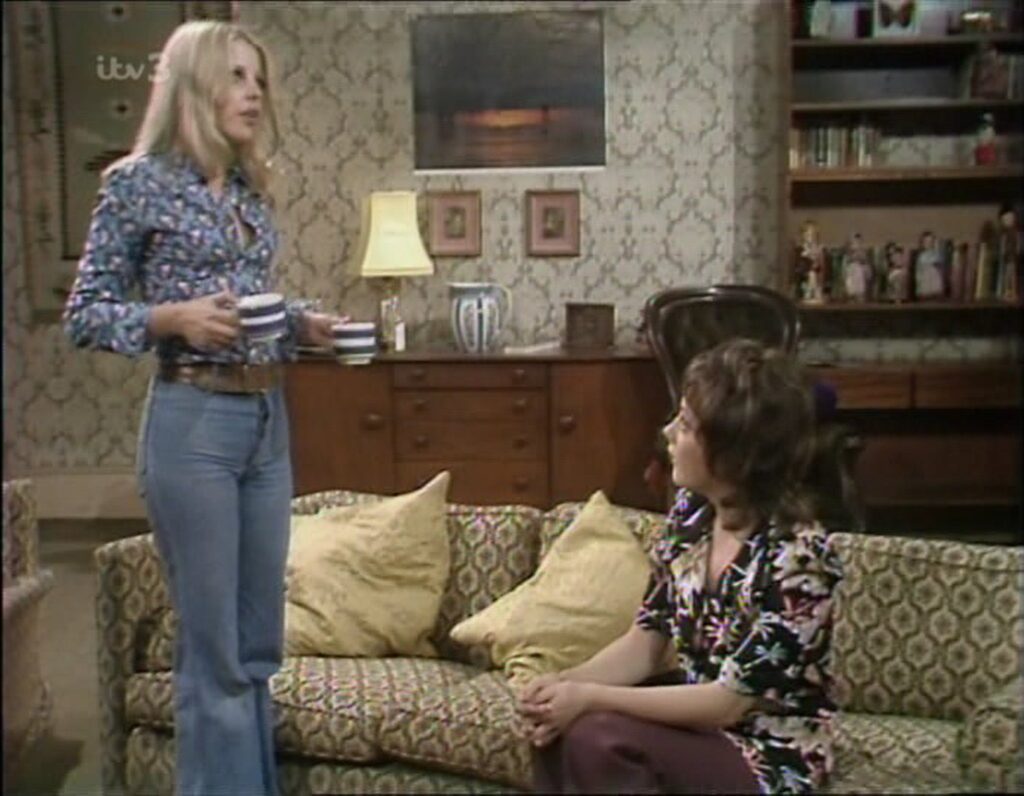
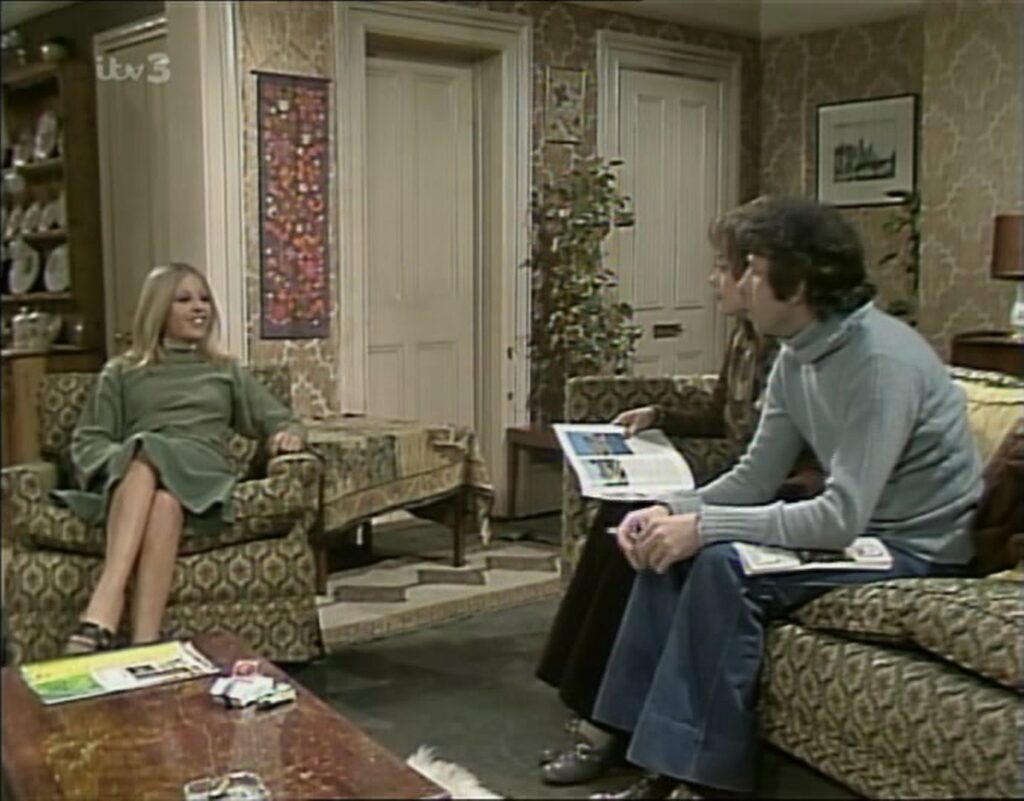
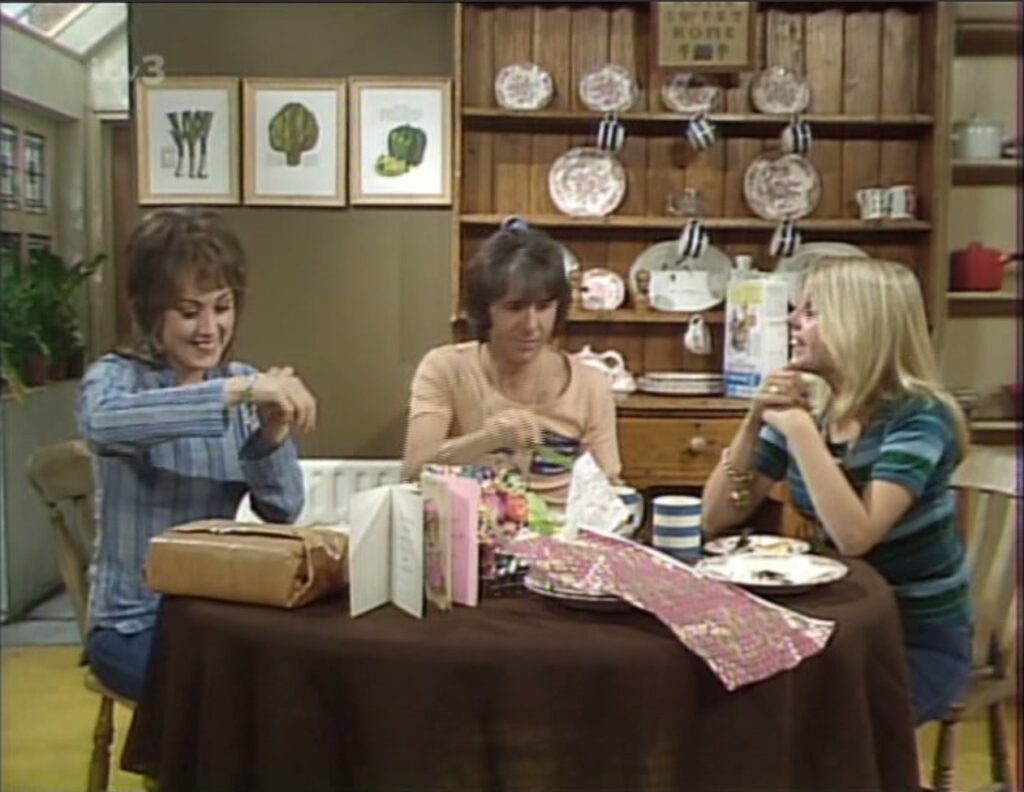
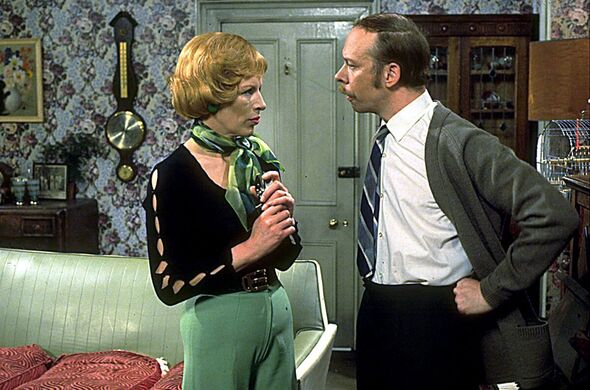
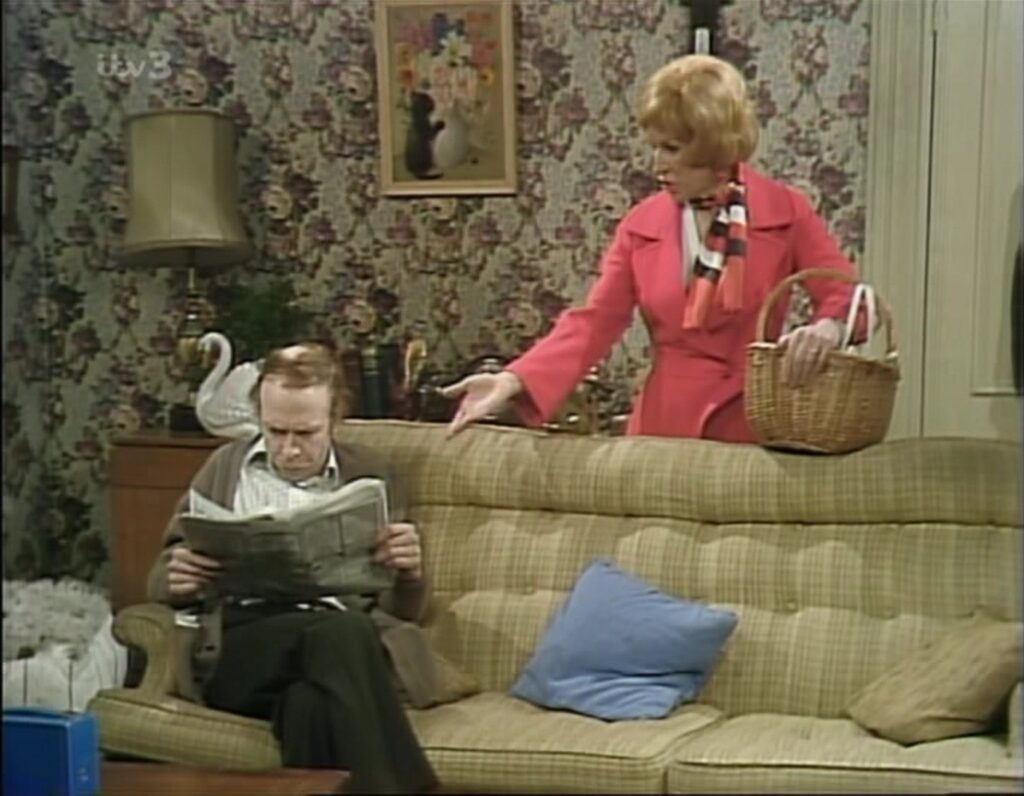
Whatever Happened to the Likely Lads
Set in Newcastle-upon-Tyne, this classic 70s sitcom was set at the opposite end of the country to Man About The House. It was a sequel to the previous series set in the mid 1960s, The Likely Lads and followed childhood friends Bob (Rodney Bewes) and Terry (James Bolam), who were both working class and the scrapes they got into. By the 1970s series however, Terry has come back from the army, in contrast to Bob and his fiancée Thelma (Brigit Forsyth) who have more middle class aspirations. Terry sees Bob as a class traitor and thinks of himself as morally superior in sticking to his roots. Thus the sitcom is based on the conflict between the two as Bob tries to move up the social ladder, only to be held back by Terry in every situation, always upsetting straight laced librarian Thelma. Whatever Happened to the Likely Lads was written by Dick Clement and Ian La Frenais and broadcast on BBC1 between 1973 and 1974.
Again there is a contrast in terms of the sets showing both characters houses. The first series focuses on Terry adjusting to life after the army, then later shows concentrates preparations for Bob and Thelma’s upcoming wedding and their new married home. In contrast to the old 19th century parent’s houses Bob, Terry and Thelma grew up in, this is a new build in the Elm Lodge housing estate. It is much to Terry’s disgust who thinks it has no character compared to the older homes, but really shows how stuck in the past he is due to missing how things have moved on during his 5 years in the army.
Scenes in the parents houses show dark brown furniture, kitchen dressers, chintz fringed lamps and settees and armchairs with protective cloth backs. This is a typical interior style of the 1930s and 40s, perhaps even earlier. In one scene Terry drinks from Woods Ware Beryl tea cup and saucer which was typical of this time. These were parents who went through both world wars, and didn’t believe in buying new household items if they didn’t need it. Their furniture was built to last! Although in Thelma’s parents house (her mother played by Joan Hickson), there are a few ostentatious touches added such as ornate brass table legs, probably added in the 1950s, no doubt designed to impress. This probably influenced Thelma’s social aspirations. You can also spot a flamenco doll and glass genie bottle too!
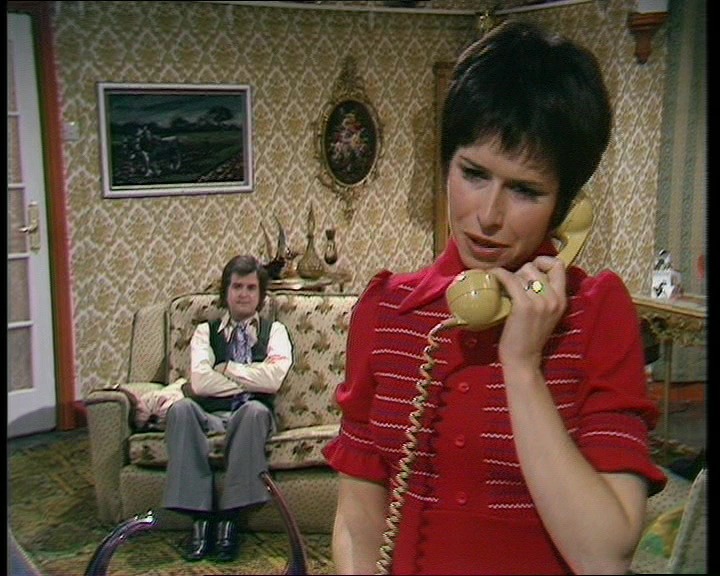
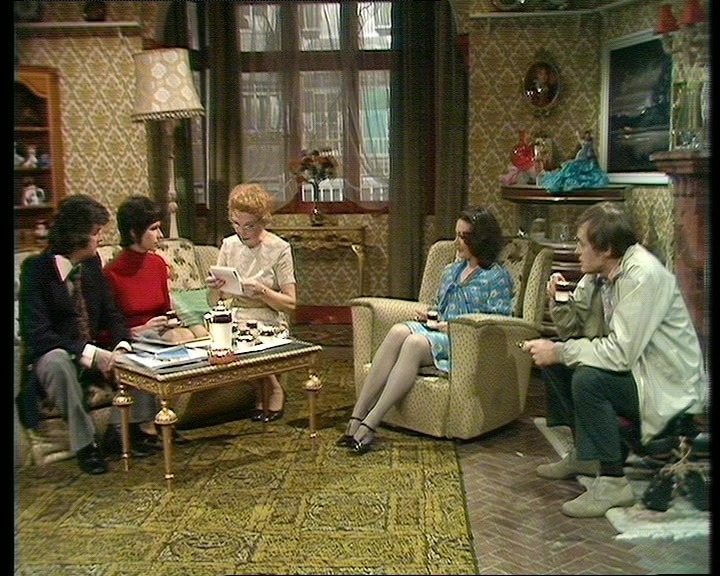
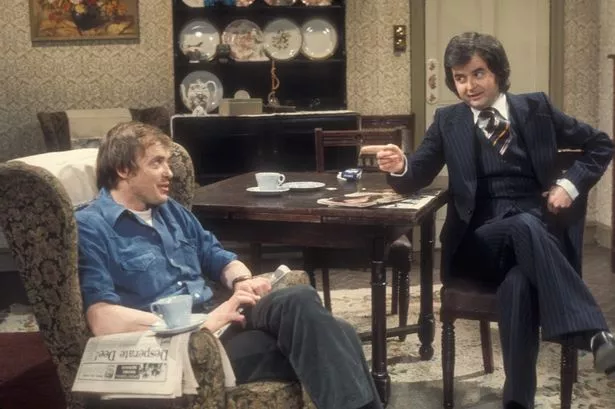
At the beginning of series two Bob and Thelma are ready to move into their new house after returning from honeymoon. The contrast is evident from the start. The rooms are large and spacious with large windows, and filled with modern furniture and accessories. The living room curtains are brown and orange flower power, the coffee table and sideboard etc are all teak, and there are brightly coloured ornaments around the place. The sofa is particularly of its time, with a modern shape and covered in brown and white stripe textured fabric. The modern fitted kitchen is bright and breezy too with yellow wallpaper, a blue formica table, and various fashionable brown pottery kitchen pots on display from makers such as Hornsea. Much like George and Mildred’s house, this was the modern version of working class taste. It was still showy and not perhaps as refined as some middle class homes, but up and coming working class couples in those days saw older furniture as the stuffy and old fashioned, and they wanted new exciting items in their modern homes instead. These tended to be mass produced and cheaper, much to the disgust of some of the middle and upper classes who were used to antique furniture, expensive dinner services and silverware in their homes.
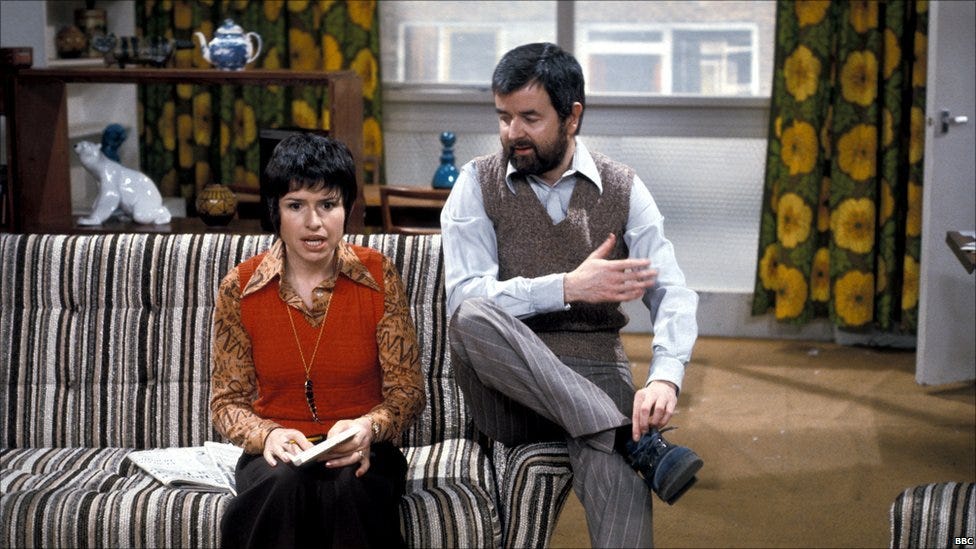
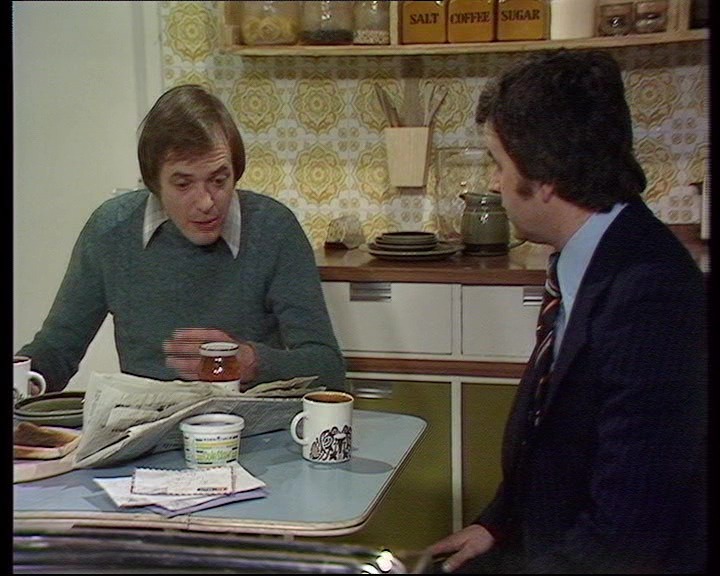
The Good Life
Arguably the most middle class of the three sitcoms in this blog, The Good Life was set in a London suburb, Surbiton, on a snobby road called The Avenue. Tom (Richard Briars) and Barbara (Felicity Kendall) Good are a childless couple who enjoy a normal middle class life, where Tom works as a draughtsman for a plastics company and Barbara is a housewife. However, on his 40th birthday, Tom realises he is no longer happy with his job and the modern rat-race, sohas a midlife crisis. He wants more from life, so persuades Barbara to live a more self sufficient lifestyle instead. Their mortgage is paid off and they set about converting their garden into an allotment to grow their own food, and keep chickens, pigs and a goat, even attempting to make their own fuel. This is much to the disapproval of their snobby neighbours Margot (Penelope Keith) and Jerry (Paul Eddington) Ledbetter who lead a more conventional conservative life next door. However they are kind underneath it all and try to help Tom and Barbara when they can seeing them as good friends. The comedy comes from the contrast between the two couples, plus the mistakes they make trying to settle into their new lifestyle. The Good Life was written by John Esmonde and Bob Larbey and aired on BBC1 from 1975 to 1978.
In common with the interior styles of the day, the decor scheme in both houses is mostly brown and muted. However these are not fashionable houses with modern mass produced items, such as in Bob and Thelma’s new home. The style is quite tasteful so we don’t see bright colours or kitsch knick knacks on display, but more a country style house for Tom and Barbara. We can see William Morris style fabric on the sofas, a tasteful old master picture over the brick fireplace and heavy oak coffee table. This fits in with their image of a rustic couple, who do not go in for expensive displays of money. The furniture they already have was probably quite good quality and paid for with Tom’s comfortable salary. So they don’t really need to replace or buy anything new during their self sufficient lifestyle.
The Goods have an old fashioned range installed in their kitchen which is essential to their new lifestyle, and the fitted cupboards, along with the central table and chairs are of rustic pine. There is lots of simple brown hand made looking pottery on display and a similar coffee set is in use for kitchen scenes. Their living room follows in much the same theme, that is, tasteful rustic charm.
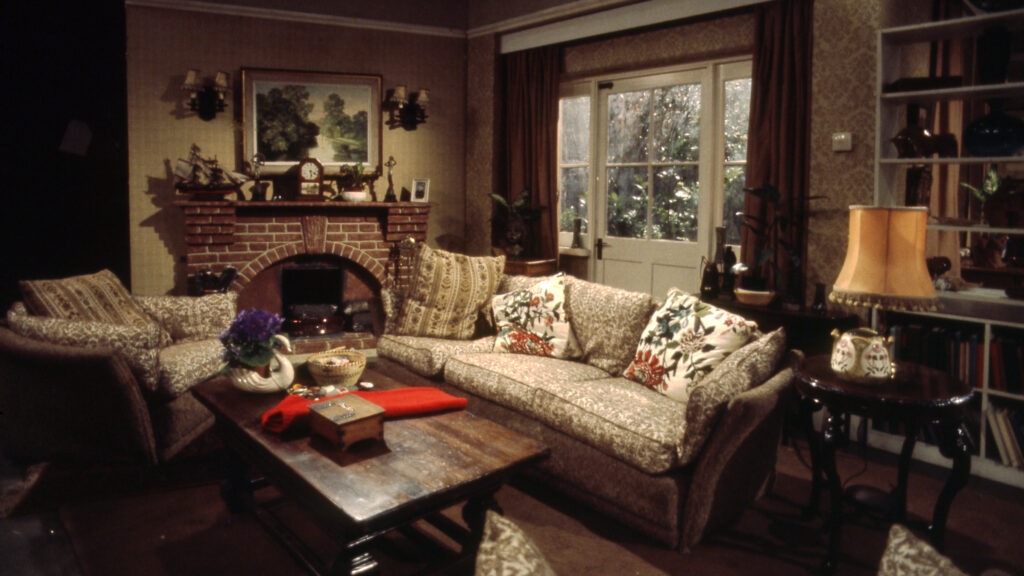
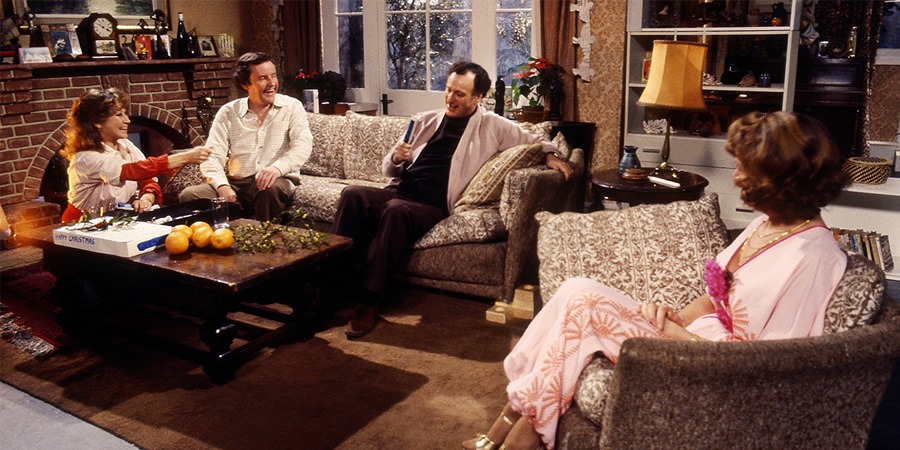
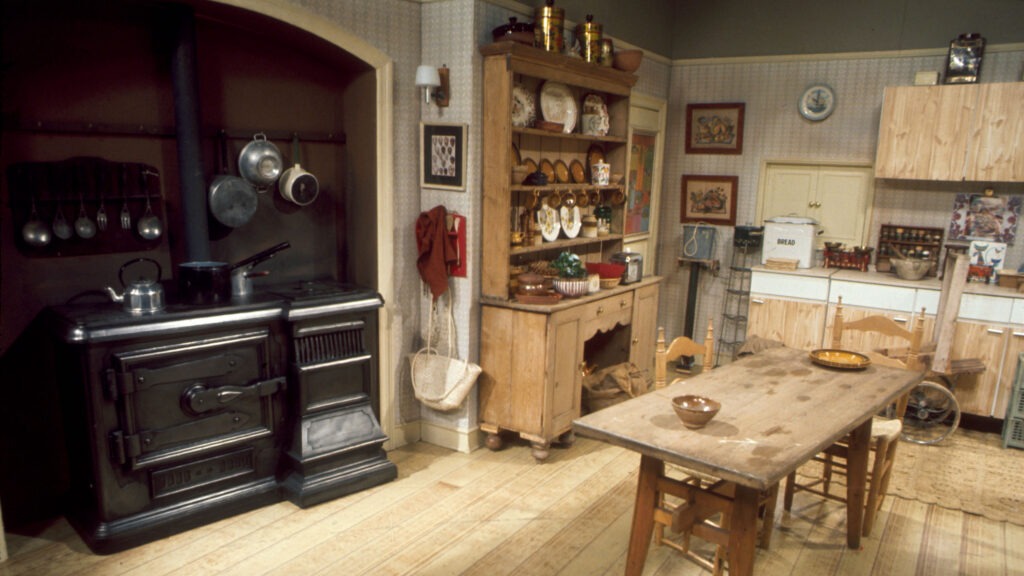
Margot and Jerry have a similar living room and kitchen layout but their taste is a bit more conservative and refined, with antique furniture and expensive porcelain ornaments etc. It is a living room Margot has designed to entertain her distinguished guests in, and impress them enough to move up the social scale. Margot doesn’t really sneer at Tom and Barbara’s decorating style during the series either, and seems quite comfortable in their living room in the famous Christmas special (where they pull home made crackers). Her criticism seems to be limited to their self sufficiency lifestyle, suggesting she saw their home as perfectly middle class before.
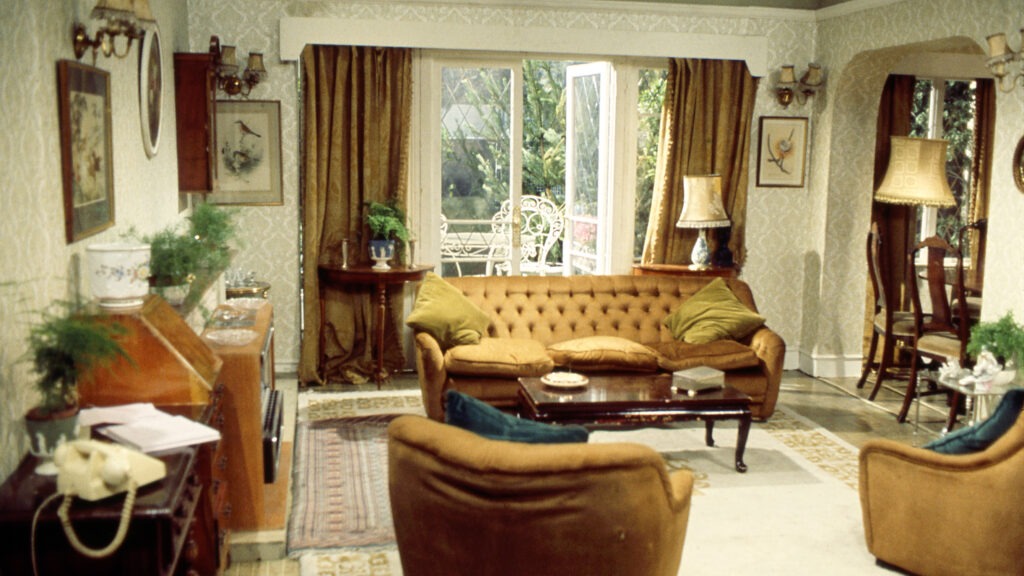
In conclusion, the 1970s was a very upwardly mobile time for young couples. There was a lot of aspiration about, especially among the working classes hoping for a better life than their parents had. This shows in these iconic 1970s sitcom interiors. The middle class and older people’s homes are still full of dark brown furniture that was made to last, whereas the younger couples have new ideas. The exception to the older generation is George and Mildred who did seem to go in for the mass produced style of their day, but probably didn’t realise that it needed updating.
This blog post is written by Rachel Toy, owner of Rachel’s Vintage & Retro. I am a 20th Century Vintage Blogger and Dealer writing about the vintage lifestyle, collecting, nostalgia and selling vintage. I also sell carefully curated 20th century antiques and collectables from my online vintage shop. I am happy to work with related brands on collaborations and also accept guest blogs. Find out how to work with me.

